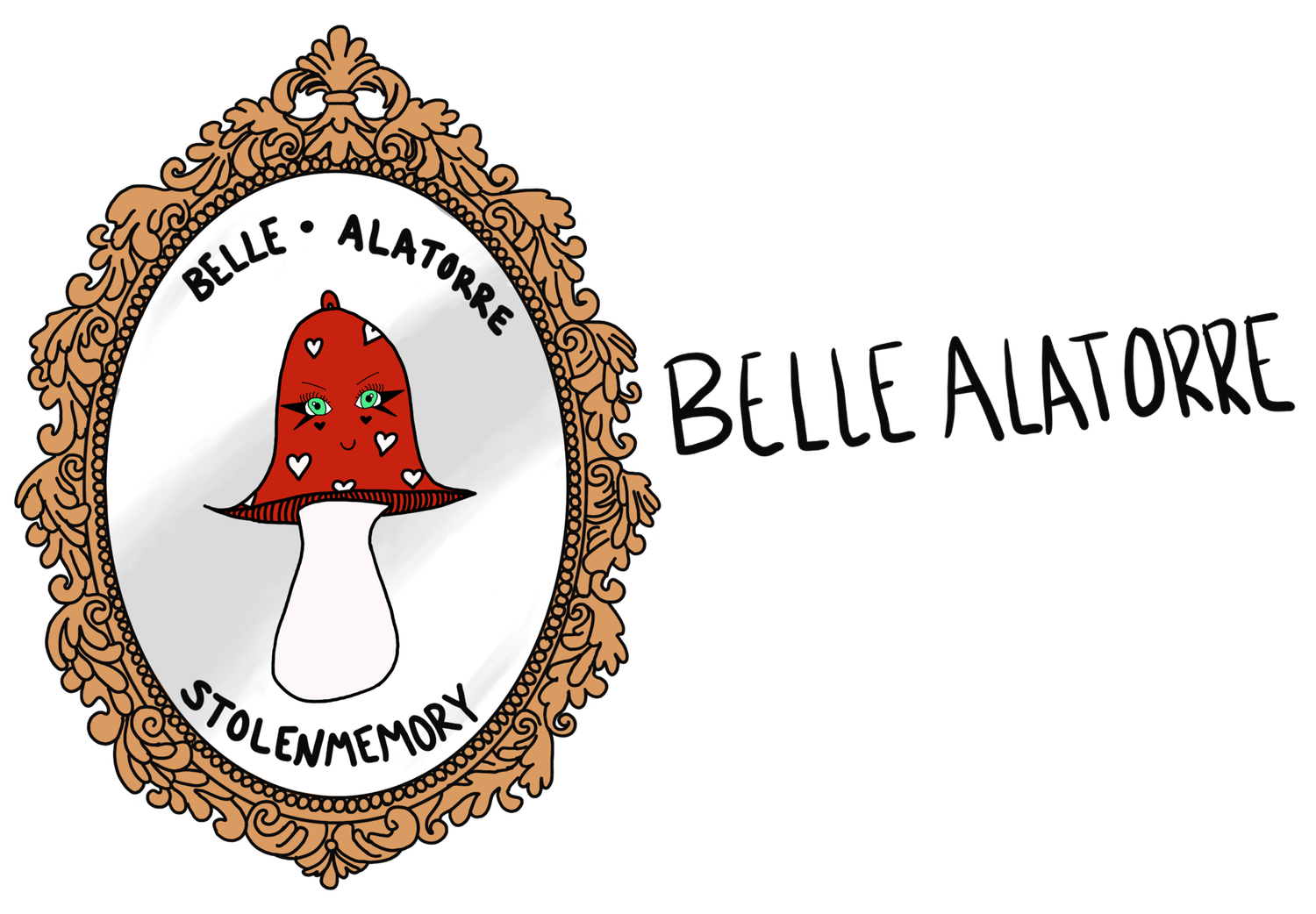A Chorus Line
(Audio Engineer)
In an empty theatre, on a bare stage, the casting for a new Broadway musical is almost complete. For 17 diverse dancers, this audition is the chance of a lifetime. Featuring an incomparable score and sensational dance numbers, A Chorus Line is one of the most iconic musicals ever written and remains relevant, poignant, provocative and explosively entertaining.
Picture by: Craig Schwartz
March 30, 2022 - April 10, 2022
Bing Theatre
University of Southern California
DIRECTED BY - Tim Dang
MUSIC DIRECTED BY - Abdul Hamid Royal
CHOREOGRAPHED BY - Cedric Dodd
SCENIC DESIGN - Jesus Hurtado
COSTUME DESIGN - Emma Kremer
LIGHTING DESIGN - M. Milner Sommers
SOUND DESIGN - Alexis Attalla
PRODUCTION STAGE MANAGER - Damaris Eddy
From the Designer
From my initial meeting with the director, we discussed how his vision included showcasing to the audience how each of these dancers is an individual. The main theme he had was "Unity through Individuality".
This theme made its way heavily into my design idea and choices, influencing my decision to make spatial audio and audio movement throughout the entire audio system a large part of my design. In my view, before I had started programming the show, I felt that location based audio could help contribute to this overall theme of unity through individuality. The idea was that each voice would be located in a separate part of the audio system but when combined and singing together, they would merge and blend together to create a unified whole. By placing different voices in different speakers in the surround system, this also created a much larger, deeper picture than one usually gets from a musical when the audio is coming solely from the main speakers usually placed on stage.
Another important aspect of my design, a part from adjusting the placements during songs, I also used the front system to help change the picture that was being created on stage. The audio system that was built had three main systems coming from the stage: the mains (located on stage left and stage right), the center cluster (hung on the centerline above the proscenium), and the front fill (located on the front lip of the stage in front of the orchestra pit). The idea was that for dialogue, all voices would be placed in the mains. During songs or in moments where we wanted to highlight a specific character, their voice would fade into the center cluster. The idea behind this was to center the picture on the stage and force the audience to give a little more attention to the voice coming from the center cluster.
The band, meanwhile, was located primarily in the Front Fill but when I wanted to create depth in the space and felt that there was room in the design for it, I had the band swell out into the surrounding house system.
The end product was a console file with just over 300 cues, most of them automated band movement.
Engineering Experience
A Chorus Line was my first time ever mixing a musical and it was one I will never forget. Due to the complexity of spatial audio, my designer was giving cue updates up until opening. I not only had to maneuver the vocals and the band but a lot of the design was the cueing. In order to stay true to my designer’s original design, I had to take the cues at exact moments to make sure the vocal movements in the system flowed correctly. It was a tedious task but something I needed to do and learn fast. With there being around 300+ cues, there was never a dull moment in the show. Below are some examples of my script and of the DCA cues I had to take.
My Mixing Setup
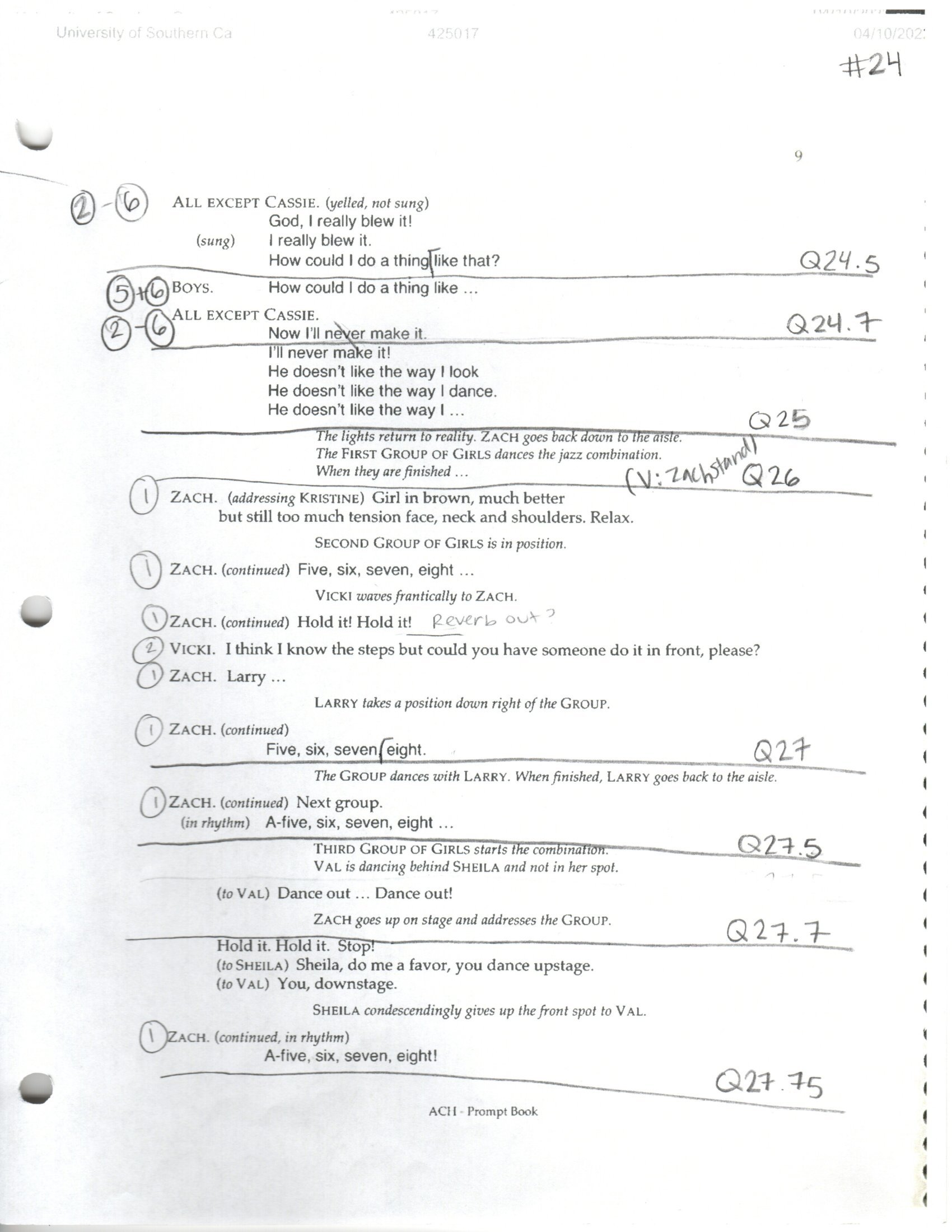
Opening: I Hope I Get It
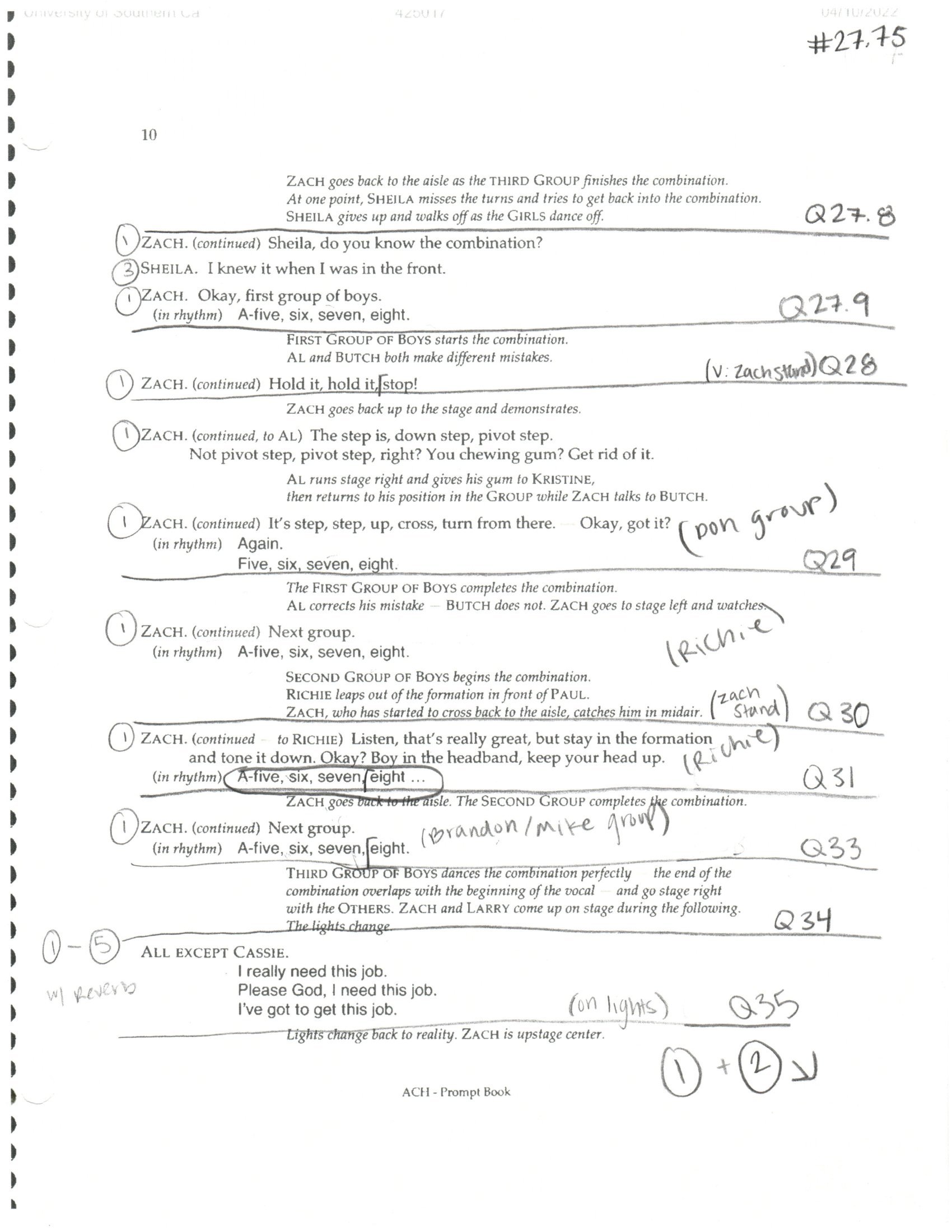
Opening: I Hope I Get It
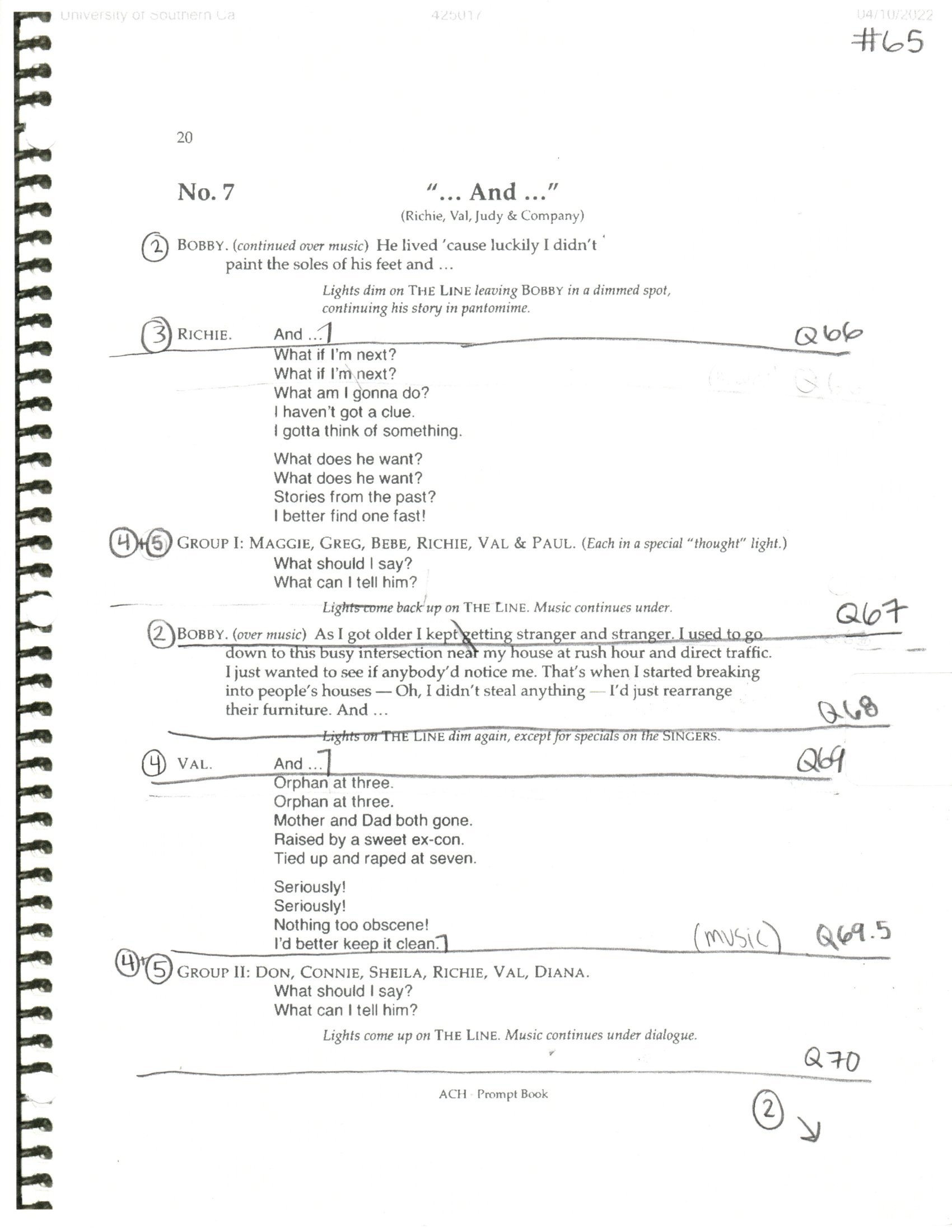
"... And..."
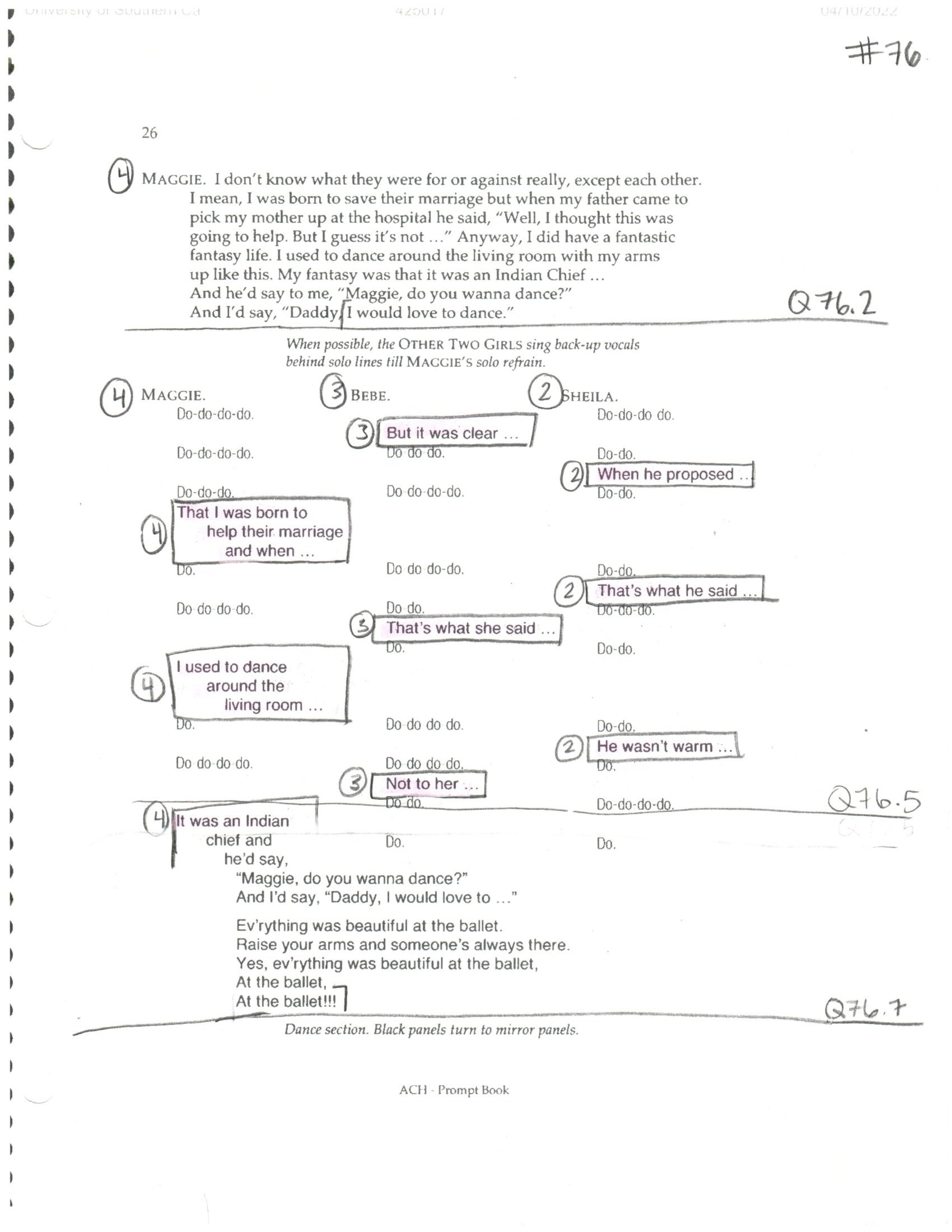
At the Ballet
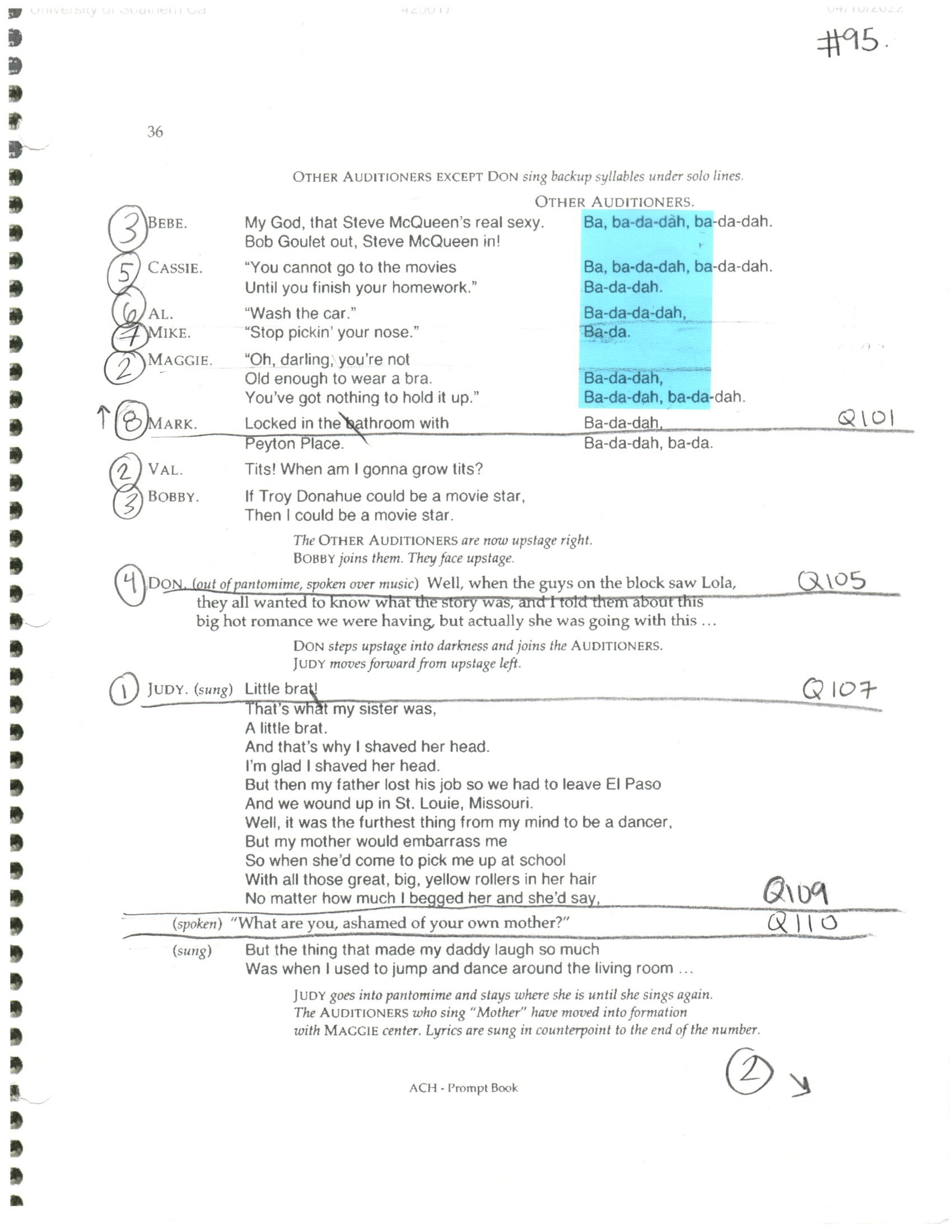
Montage, Part 3: Mother
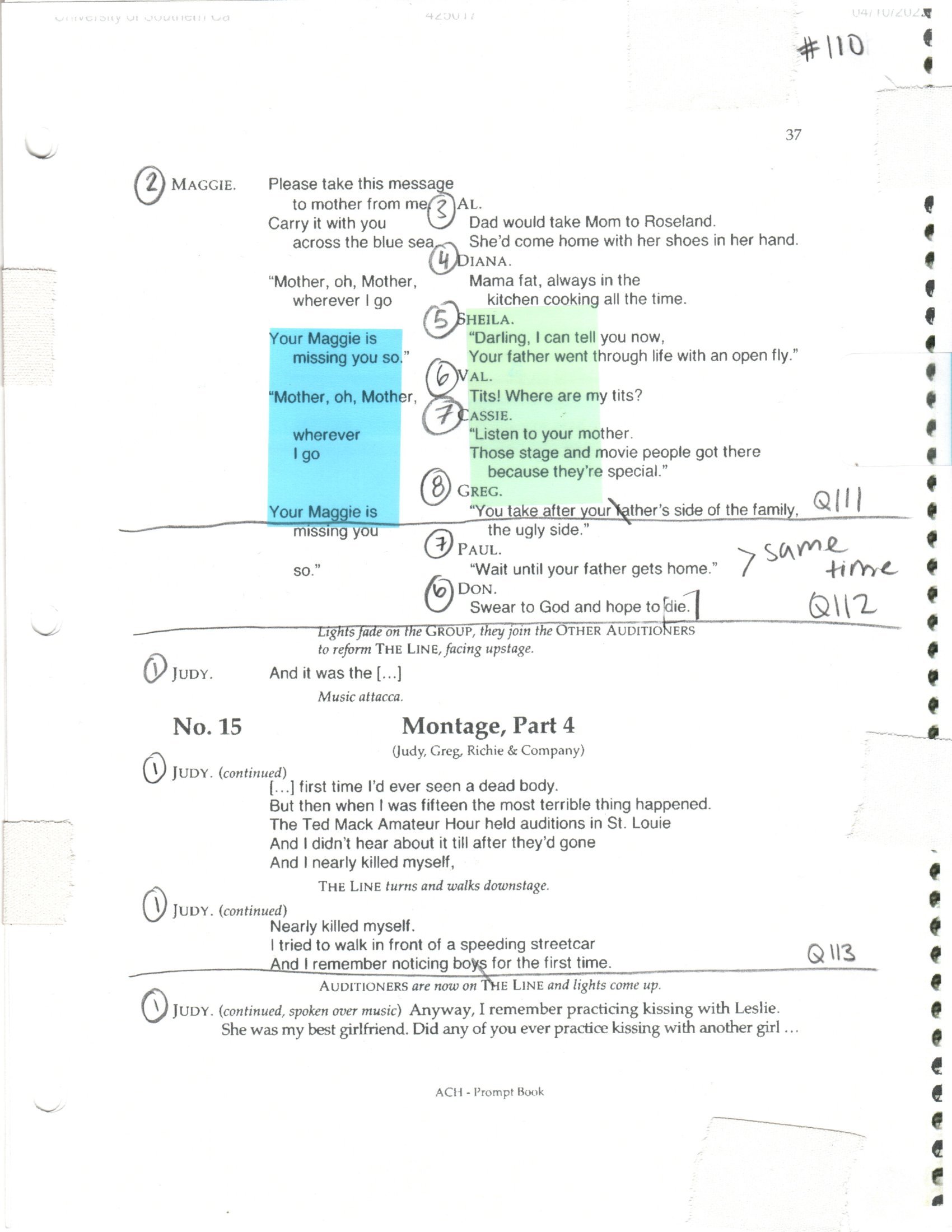
Montage, Part 3: Mother
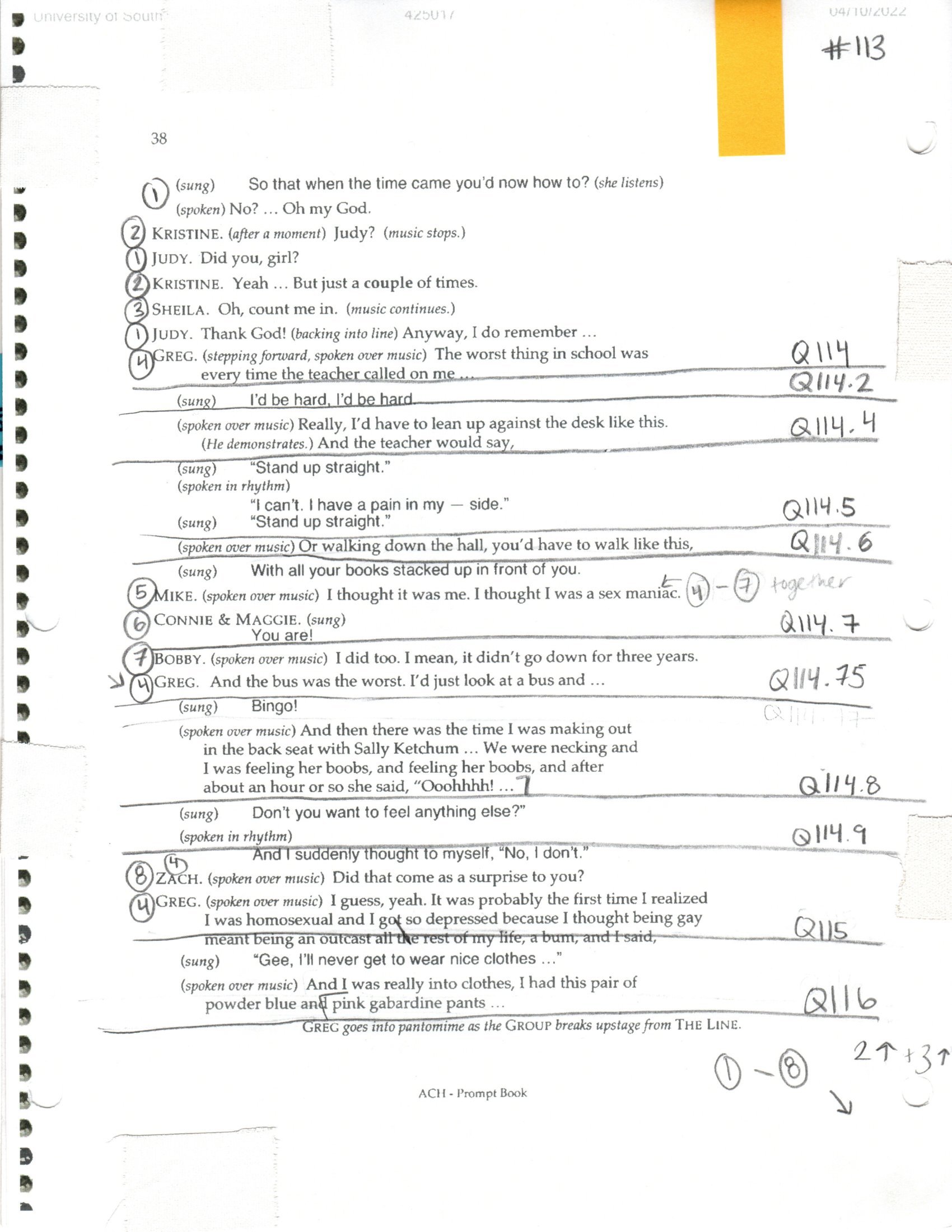
Montage, Part 4: Gimme the Ball
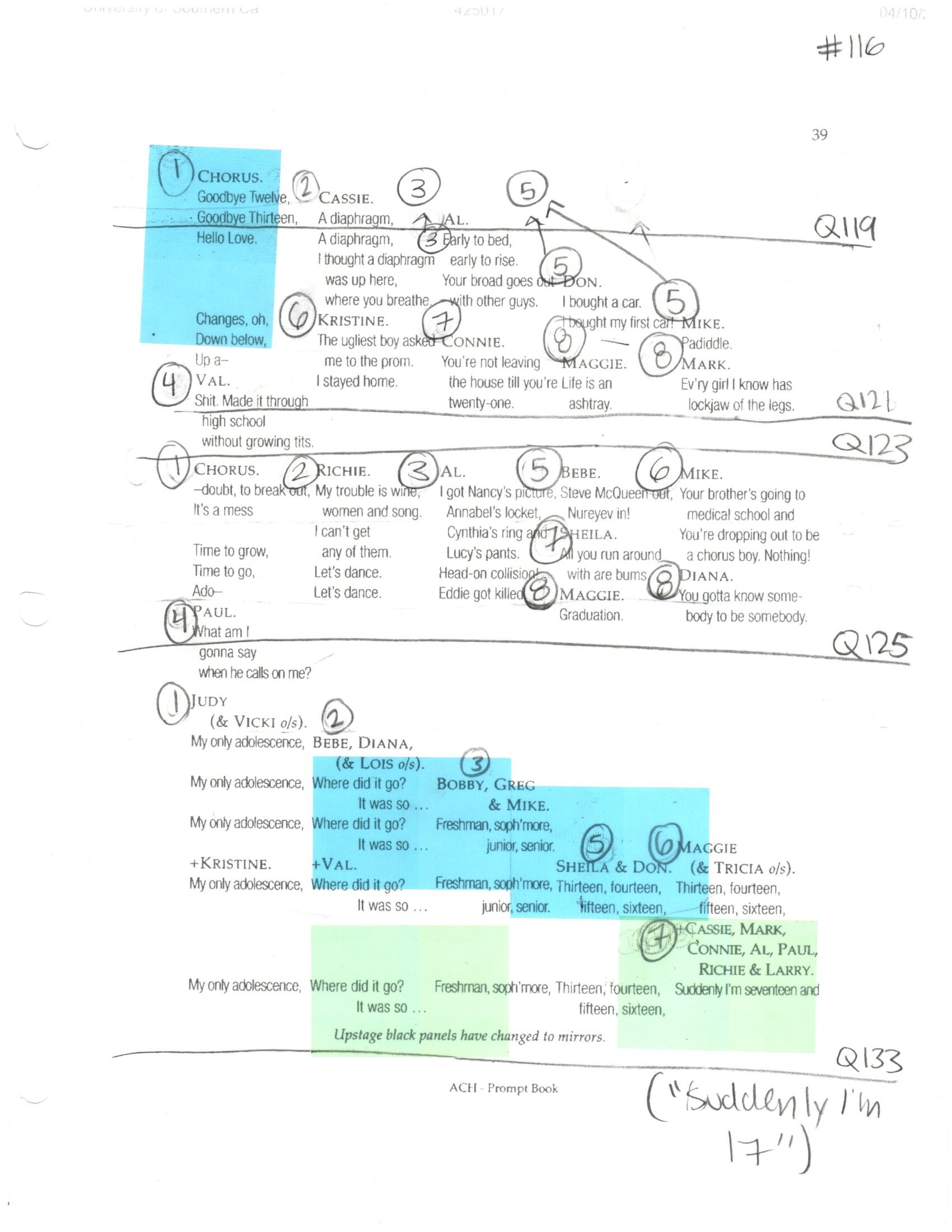
Montage, Part 4: Gimme the Ball
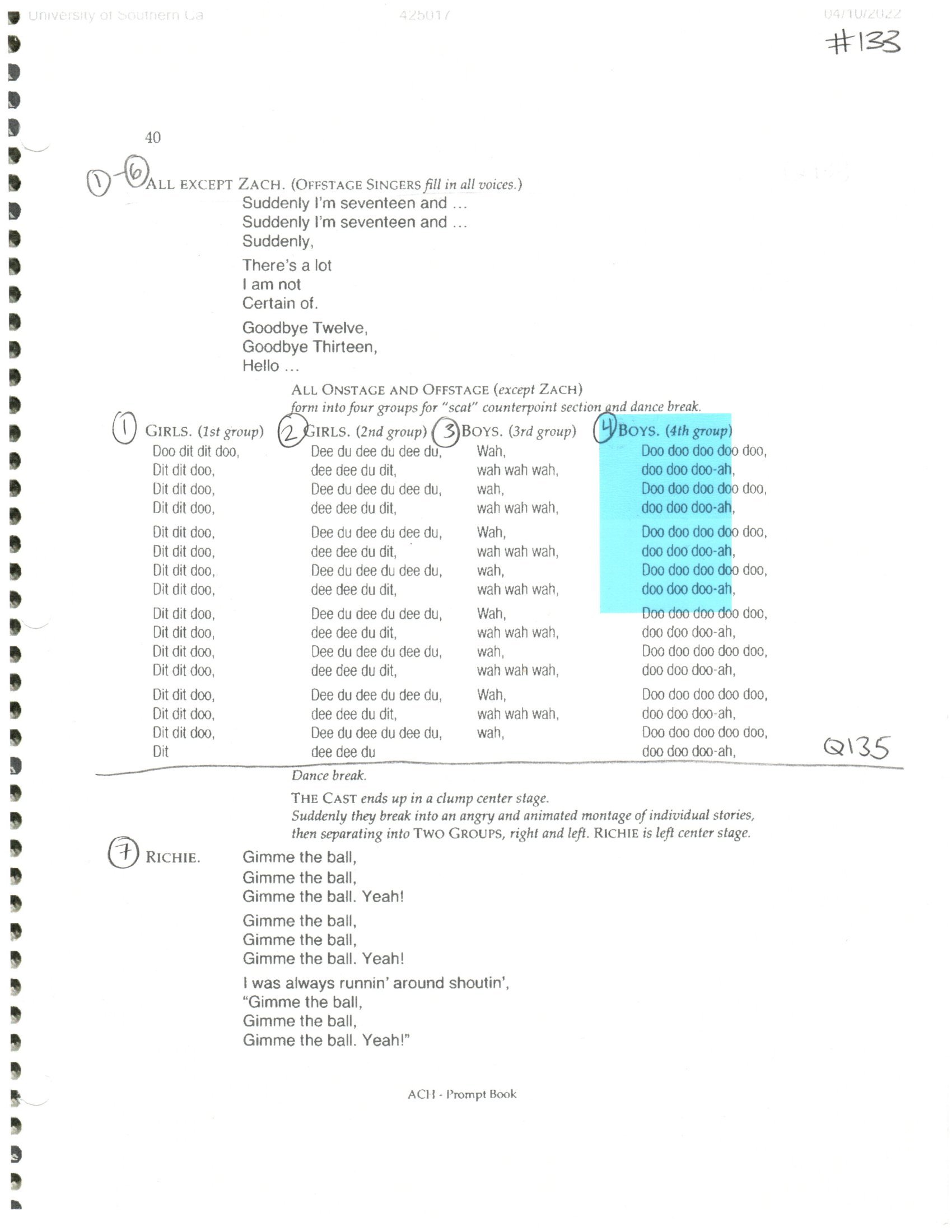
Montage, Part 4: Gimme the Ball
